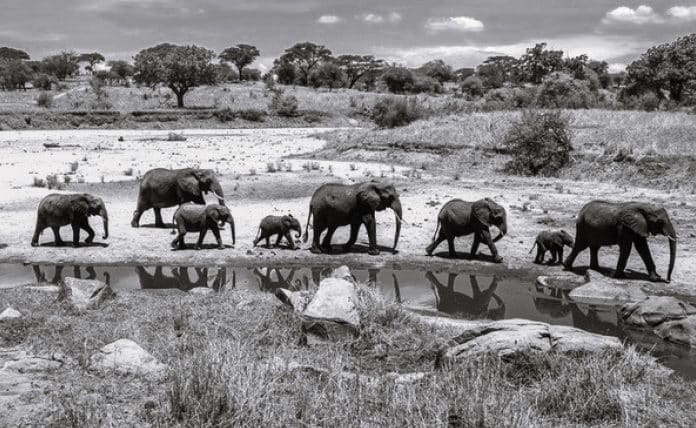Unveiling the Treasures: Exploring the Best Things to See in Tanzania
Are you visiting Tanzania for the first time and wondering what the best things to see in Tanzania are? In Tanzania, a land of wonder and enchantment, a treasure trove of natural beauty and wildlife awaits you. This East African gem is blessed with an incredible diversity that will leave you spellbound. From the iconic plains of the Serengeti to the magnificent Mount Kilimanjaro, Tanzania is a land of spectacular sights and breathtaking experiences.
Unveil the secrets of the Serengeti as you witness the annual wildebeest migration, an awe-inspiring phenomenon that draws travelers from around the world. Be mesmerized by the vibrant colors of the Ngorongoro Crater, an ancient caldera teeming with wildlife including lions, elephants, and hippos. Explore the tropical paradise of Zanzibar, with its pristine beaches and rich cultural heritage.
Whether you are a wildlife enthusiast, a nature lover, or an intrepid adventurer, Tanzania offers something for everyone. Join us as we delve into the best things to see in Tanzania and uncover the hidden treasures that await. Get ready to create memories that will last a lifetime in this captivating destination. Welcome to Tanzania, where the wonders of nature come alive.
Serengeti National Park: Home to the Great Migration
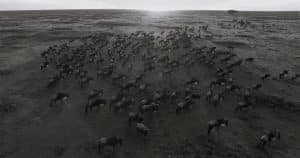
The Serengeti National Park is undoubtedly one of the most iconic, breathtaking destinations and the best things to see in Tanzania. Spanning over 14,750 square kilometers, this vast expanse of plains, savannahs, and woodlands is home to an incredible array of wildlife. However, the true highlight of the Serengeti is the Great Migration, a natural phenomenon that sees millions of wildebeest, zebras, and gazelles embark on a perilous journey in search of greener pastures.
Witnessing the Great Migration is a once-in-a-lifetime experience. Picture yourself standing on the edge of the Serengeti, as far as the eye can see, witnessing the thundering hooves of wildebeest as they cross rivers teeming with crocodiles, all in search of fresh grazing lands. This incredible spectacle is not only a testament to the resilience and adaptability of nature but also a humbling reminder of our place in the world.
In addition to the Great Migration, the Serengeti offers a wealth of other wildlife encounters. From majestic lions and graceful leopards to towering giraffes and herds of elephants, the Serengeti is a wildlife lover’s paradise. Embark on a thrilling game drive or a hot air balloon safari to truly appreciate the diversity and abundance of wildlife that calls this park home. The Serengeti will undoubtedly leave you in awe of the beauty and grandeur of nature.
Mount Kilimanjaro: Conquering Africa’s highest peak
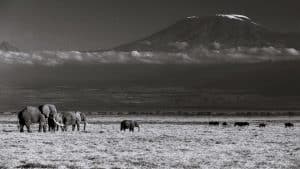
For the adventure seekers and avid mountaineers, conquering Mount Kilimanjaro is an experience like no other. Rising majestically to a height of 5,895 meters, Mount Kilimanjaro is Africa’s highest peak and one of the world’s most accessible summits. Known as the “Roof of Africa,” this dormant volcano is one of the best things to see in Tanzania and offers a challenging but rewarding climb for those who dare to take on the adventure.
Embarking on the Kilimanjaro climb is a test of physical endurance and mental resilience. The journey to the summit takes you through diverse ecosystems, from lush rainforests to barren alpine deserts. As you ascend, you will witness the dramatic changes in landscape and experience the thrill of reaching higher altitudes. Standing at Uhuru Peak, the highest point on Mount Kilimanjaro, you will be rewarded with breathtaking panoramic views that stretch as far as the eye can see.
The climb is not for the faint of heart, but with proper preparation and guidance from experienced guides, it is an achievable feat for many. Choose from various routes, each offering a unique perspective and level of difficulty. Whether you opt for the popular Machame Route or the more challenging Lemosho Route, conquering Mount Kilimanjaro is a truly exhilarating adventure that will leave you with a profound sense of accomplishment.
Zanzibar: Exploring the exotic beaches and historic Stone Town
If you’re looking for a tropical paradise with pristine beaches, crystal-clear turquoise waters, and a rich cultural heritage, Zanzibar is one of the best things to see in Tanzania. Located off the coast of Tanzania, this archipelago offers a blissful escape from the hustle and bustle of everyday life. With its white sandy beaches, swaying palm trees, and warm Indian Ocean waters, Zanzibar is a haven for beach lovers and water enthusiasts.
One of the main attractions of Zanzibar is its vibrant and historic Stone Town. A UNESCO World Heritage Site, Stone Town is a maze of narrow streets, bustling markets, and ancient buildings that reflect the island’s rich history and cultural heritage. Explore the winding alleys, visit the iconic House of Wonders, and immerse yourself in the enchanting atmosphere of this unique destination.
Beyond Stone Town, Zanzibar offers a wealth of outdoor activities and attractions. Snorkel or dive in the pristine coral reefs, swim with dolphins in the open ocean, or simply relax on the idyllic beaches and soak up the sun. Zanzibar is also known for its spice plantations, where you can take a tour and learn about the island’s spice trade history. Whether you’re seeking relaxation, adventure, or cultural immersion, Zanzibar has it all.
Ngorongoro Crater: Witnessing the diverse wildlife in a volcanic caldera
The Ngorongoro Crater is a natural wonder that must be seen to be believed. Formed millions of years ago by a volcanic eruption, this UNESCO World Heritage Site is the largest intact caldera in the world. Spanning an area of 260 square kilometers, the Ngorongoro Crater is a haven for wildlife, with an estimated 25,000 animals calling it home.
Descending into the crater is like entering a different world. The lush green plains, dotted with waterholes and acacia trees, provide a stunning backdrop for the diverse array of wildlife that roams freely within the crater walls. From lions and elephants to rhinos and zebras, the Ngorongoro Crater offers a unique opportunity to observe these majestic creatures up close in their natural habitat.
One of the highlights of a visit to the Ngorongoro Crater is witnessing the annual wildebeest migration, which often coincides with the Great Migration in the nearby Serengeti. During this time, thousands of wildebeest and zebras descend into the crater in search of fresh grazing lands, creating a spectacle that is not to be missed. Whether you visit during the migration or not, the Ngorongoro Crater is guaranteed to leave you in awe of its beauty and biodiversity.
Tarangire National Park: Discovering the elephants and baobab trees
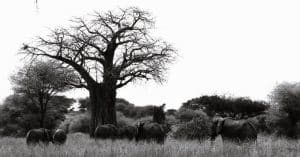
Tarangire National Park may be lesser-known compared to its famous neighbors, but it is no less impressive. Located in northern Tanzania, this park is known for its vast elephant herds, ancient baobab trees, and diverse birdlife. If you’re a wildlife enthusiast looking for a more off-the-beaten-path experience, Tarangire National Park should be on your list.
The park’s most iconic feature is undoubtedly its large population of elephants. With over 3,000 individuals roaming the park, Tarangire offers unparalleled opportunities for elephant sightings. Witness these gentle giants as they traverse the savannah, play in the mud, or congregate around the waterholes to quench their thirst. Tarangire is a paradise for photographers and wildlife enthusiasts alike.
In addition to elephants, Tarangire National Park is home to a wide variety of wildlife, including lions, leopards, giraffes, and zebras. The park’s diverse habitats, from open grasslands to dense woodlands, provide a haven for these animals and make for excellent game viewing opportunities. Embark on a guided safari or a walking safari to truly immerse yourself in the beauty of Tarangire National Park.
Aside from wildlife, Tarangire National Park is also famous for its ancient baobab trees, which dot the landscape like sentinels. These iconic trees, with their unique shape and impressive size, create a surreal and otherworldly atmosphere. Capture the perfect Instagram-worthy shot against the backdrop of these majestic giants and create memories that will last a lifetime.
Lake Manyara National Park: Bird-watching and tree-climbing lions
Lake Manyara National Park may be one of Tanzania’s smaller parks, but it is no less captivating. Nestled at the base of the Great Rift Valley escarpment, this park offers a unique combination of diverse habitats, from the lush groundwater forest to the expansive soda lake. Lake Manyara is a haven for bird-watchers, with over 400 species of birds recorded within its boundaries.
Embark on a bird-watching safari and spot a variety of colorful feathered creatures, including flamingos, pelicans, and storks. The park’s diverse habitats attract a wide range of bird species, making it a paradise for bird enthusiasts. Keep your binoculars handy and be prepared to be amazed by the sheer number and diversity of birdlife in Lake Manyara National Park.
In addition to bird-watching, Lake Manyara is also known for its tree-climbing lions. Witness these elusive creatures as they lounge lazily on the branches of acacia trees, seemingly defying gravity. The reason behind this unique behavior is still a mystery, but it adds an extra element of excitement and intrigue to a safari in Lake Manyara National Park.
Beyond the birds and tree-climbing lions, Lake Manyara National Park is also home to a variety of other wildlife, including elephants, buffalos, and hippos. Embark on a game drive or a walking safari and explore the park’s diverse landscapes, from the dense forest to the open savannah. Lake Manyara may be small in size, but it is big on natural beauty and wildlife encounters.
Selous Game Reserve: Exploring the largest protected wildlife area in Africa
For those seeking a more remote and off-the-beaten-path safari experience, the Selous Game Reserve is a hidden gem. Located in southern Tanzania, this vast wilderness is the largest protected wildlife area in Africa, spanning over 50,000 square kilometers. With its diverse landscapes and abundant wildlife, the Selous offers a truly immersive and authentic safari experience.
The Selous Game Reserve is known for its pristine wilderness and untouched natural beauty. Picture yourself cruising along the Rufiji River, surrounded by hippos and crocodiles, as you spot elephants, lions, and giraffes on the riverbanks. Take a walking safari and explore the reserve’s diverse habitats, from open grasslands to dense woodlands, and discover the hidden wonders of this remote and untouched wilderness.
One of the unique features of the Selous Game Reserve is its focus on sustainable and responsible tourism. Unlike other popular national parks, the Selous limits the number of visitors, ensuring a more exclusive and intimate safari experience. This allows for a deeper connection with nature and a greater appreciation for the delicate balance of ecosystems within the reserve.
In addition to game drives and walking safaris, the Selous Game Reserve offers a range of other activities for the adventurous traveler. Embark on a boat safari along the Rufiji River, go fishing for the elusive tigerfish, or simply relax and unwind in a luxurious tented camp, surrounded by the sights and sounds of the African wilderness. The Selous Game Reserve offers a truly immersive and unforgettable safari experience that will leave you with memories to last a lifetime.
Cultural experiences in Tanzania: Maasai villages and local traditions
While Tanzania is renowned for its wildlife and natural beauty, it is also a culturally rich and diverse country. Immersing yourself in the local culture and traditions is an essential part of any trip to Tanzania. From visiting Maasai villages to exploring local markets and festivals, there are countless opportunities to connect with the vibrant and welcoming people of Tanzania.
The Maasai people are one of the most well-known and distinctive tribes in Tanzania. Known for their vibrant red robes, intricate beadwork, and traditional way of life, the Maasai offer a glimpse into a rich and ancient culture. Visit a Maasai village and learn about their customs, traditions, and unique way of life. Engage in traditional dances, listen to captivating stories, and even participate in their daily activities, such as herding cattle or building a traditional Manyatta.
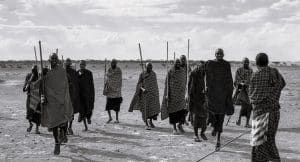
Beyond the Maasai, Tanzania is home to numerous other ethnic groups, each with its own distinct traditions and customs. Visit local markets and witness the bustling atmosphere as locals barter and trade their goods. Explore the vibrant city of Dar es Salaam and experience the vibrant urban culture and nightlife. Participate in local festivals and celebrations, such as the Swahili Cultural Festival or the Kilimanjaro Marathon, and immerse yourself in the colorful and diverse tapestry of Tanzanian culture.
Engaging with the local communities not only provides a deeper understanding of the country but also contributes to sustainable and responsible tourism. By supporting local artisans, craftsmen, and businesses, you are directly contributing to the preservation and promotion of Tanzania’s cultural heritage.
Planning your unforgettable trip to Tanzania
There are so many best things to see in Tanzania as the country is a land of wonders, where the beauty of nature and the richness of culture come together to create a truly unforgettable experience. From the iconic plains of the Serengeti to the majestic Mount Kilimanjaro, from the pristine beaches of Zanzibar to the remote wilderness of the Selous, Tanzania offers a wealth of natural beauty and wildlife encounters.
Whether you are a wildlife enthusiast, a nature lover, or a cultural explorer, Tanzania has something to offer everyone. Embark on a safari and witness the Great Migration in the Serengeti, conquer Mount Kilimanjaro, explore the exotic beaches of Zanzibar, or immerse yourself in the vibrant culture of the Maasai. The possibilities are endless, and the memories you create will last a lifetime.
When planning your trip to Tanzania, consider the best time to visit based on your interests. The Great Migration typically takes place from July to October, while Mount Kilimanjaro can be climbed year-round, with the driest months being January to March and July to October. Zanzibar’s dry season from June to October is ideal for beach lovers, while the wet season from November to May offers lower prices and fewer tourists.
For more articles related to Things to Do in Tanzania (Zanzibar), click here!

























